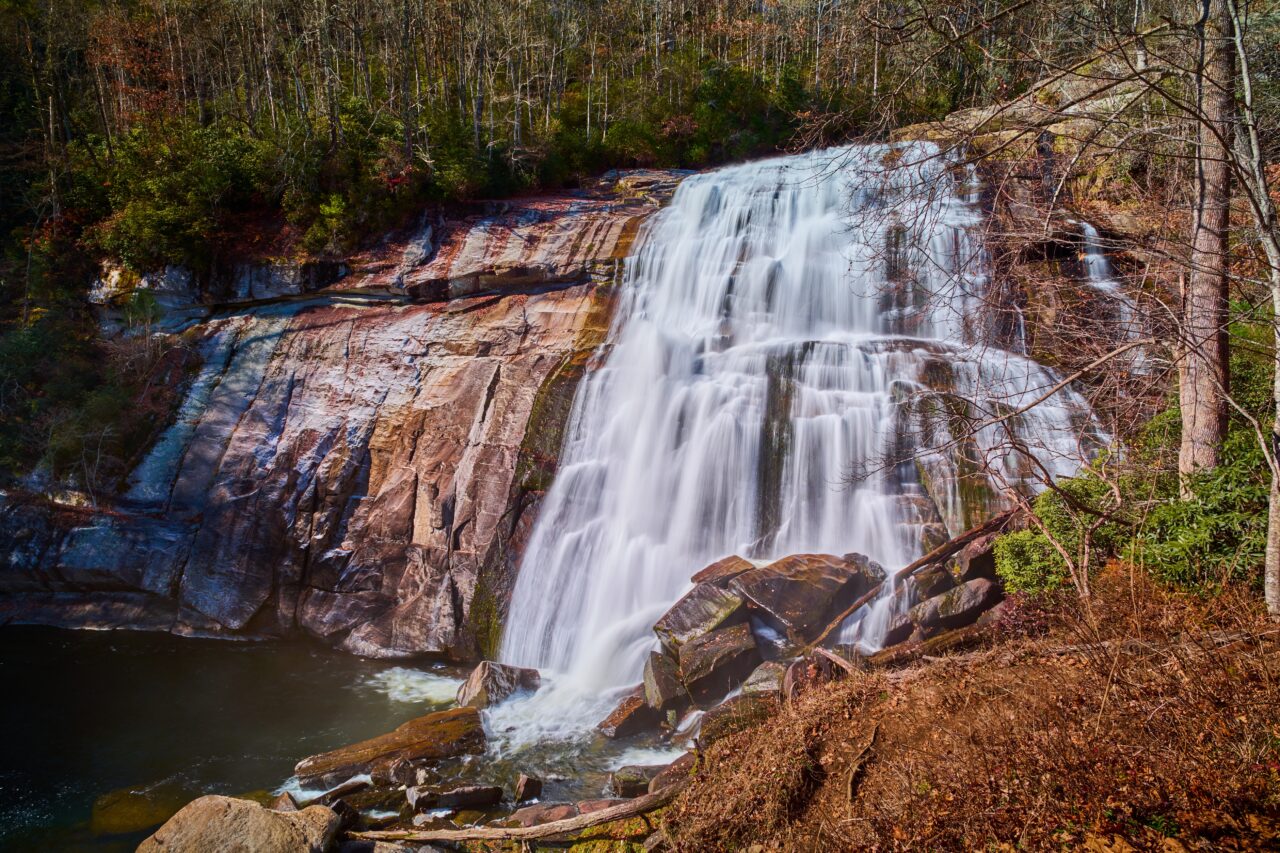The journey to Rainbow Falls starts from Gorges State Park, leading hikers on a 1.5-mile trail to the breathtaking 150-foot waterfall. This moderately challenging hike offers stunning views and is a perfect adventure in North Carolina’s Pisgah National Forest.
Welcome to Rainbow Falls, one of North Carolina’s most stunning natural wonders located in the Pisgah National Forest. This guide aims to provide you with essential information on hiking, as well as insights into the area’s unique flora, fauna, and geology to enhance your outdoor adventure in this scenic locale.
Hiking to Rainbow Falls
The journey to Rainbow Falls starts from the Gorges State Park entrance. The hike is approximately 1.5 miles one-way from the Grassy Ridge parking area, leading to a moderately challenging trail that rewards hikers with breathtaking views of the 150-foot waterfall.
Trail Characteristics
- Length: 3 miles round trip
- Difficulty: Moderate to challenging
- Elevation Gain: Approximately 400 feet
- Trail Use: Hiking. Note that pets are allowed but should be kept on a leash.
What to Bring
For a safe and enjoyable hike, bring the following:
- Water and snacks
- Sturdy hiking boots
- Sun protection and insect repellent
- Camera or smartphone for photography
- A small first-aid kit

Fauna and Flora of Rainbow Falls Area
The ecosystem surrounding Rainbow Falls is a haven for biodiversity, featuring a rich assortment of wildlife and plant species.
Fauna
The forests and waters in this area host a diverse range of animals. Watch for:
- Birds: Peregrine falcons and warblers are commonly seen, especially during migratory seasons.
- Mammals: White-tailed deer, black bears, and raccoons are among the larger mammals inhabiting the region.
- Reptiles: Be vigilant for snakes such as the Eastern garter snake along the trails.
Flora
The plant life adds another layer of beauty to the hike:
- Wildflowers: Spring and early summer bring a profusion of wildflowers, including trillium, wild iris, and mountain laurel.
- Trees: The canopy is dominated by Oaks, Hickories, and the occasional Tulip Poplar, providing shade and habitat for the area’s fauna.
Geology of Rainbow Falls
The incredible spectacle of Rainbow Falls is due in part to the area’s unique geological features. The falls themselves plunge over a rugged cliff of precambrian gneiss, a rock formed over a billion years ago. This hard, metamorphic rock resists erosion, contributing to the waterfall’s height and power.
The surrounding topography is shaped by the collision of continental plates, which uplifted the Appalachian Mountains. Glacial and water erosion over millions of years carved out the present landscape, with the Horsepasture River cutting a deep gorge leading to the falls.
Safety and Conservation Tips
- Leave No Trace: Pack out all trash and respect wildlife by maintaining a safe distance.
- Water Safety: The rocks around Rainbow Falls can be slippery, and the currents strong. Swimming is not recommended.
- Conservation: Stay on marked trails to protect the fragile ecosystem and prevent erosion.
Visiting Rainbow Falls
Rainbow Falls is accessible year-round, but the best time to visit is in the spring and early summer for wildflower displays or after heavy rains when the waterfall is particularly impressive.
Getting There
Rainbow Falls is accessible via Highway 281, with parking available at Gorges State Park. Follow the signs to the trailhead from the Grassy Ridge parking area.
Nearby Attractions
Consider extending your visit with trips to nearby natural attractions:
- Turtleback Falls, a popular spot just upstream from Rainbow Falls.
- Whitewater Falls, one of the highest waterfalls in the eastern U.S., located a short drive away.
Embark on your journey to Rainbow Falls with this guide as your roadmap to adventure. Enjoy the natural beauty, respect the environment, and make unforgettable memories in North Carolina’s great outdoors.

There are no comments yet.